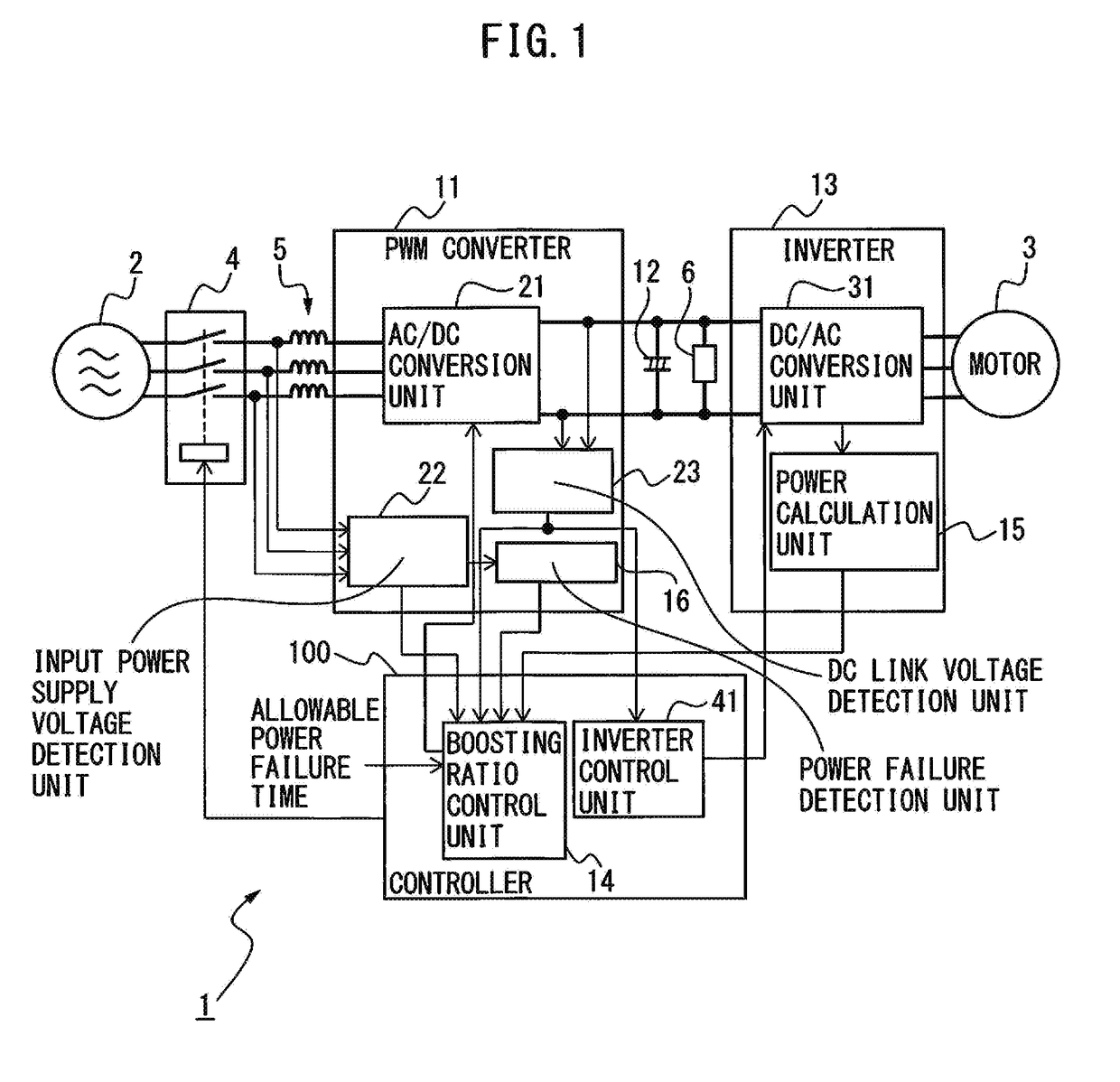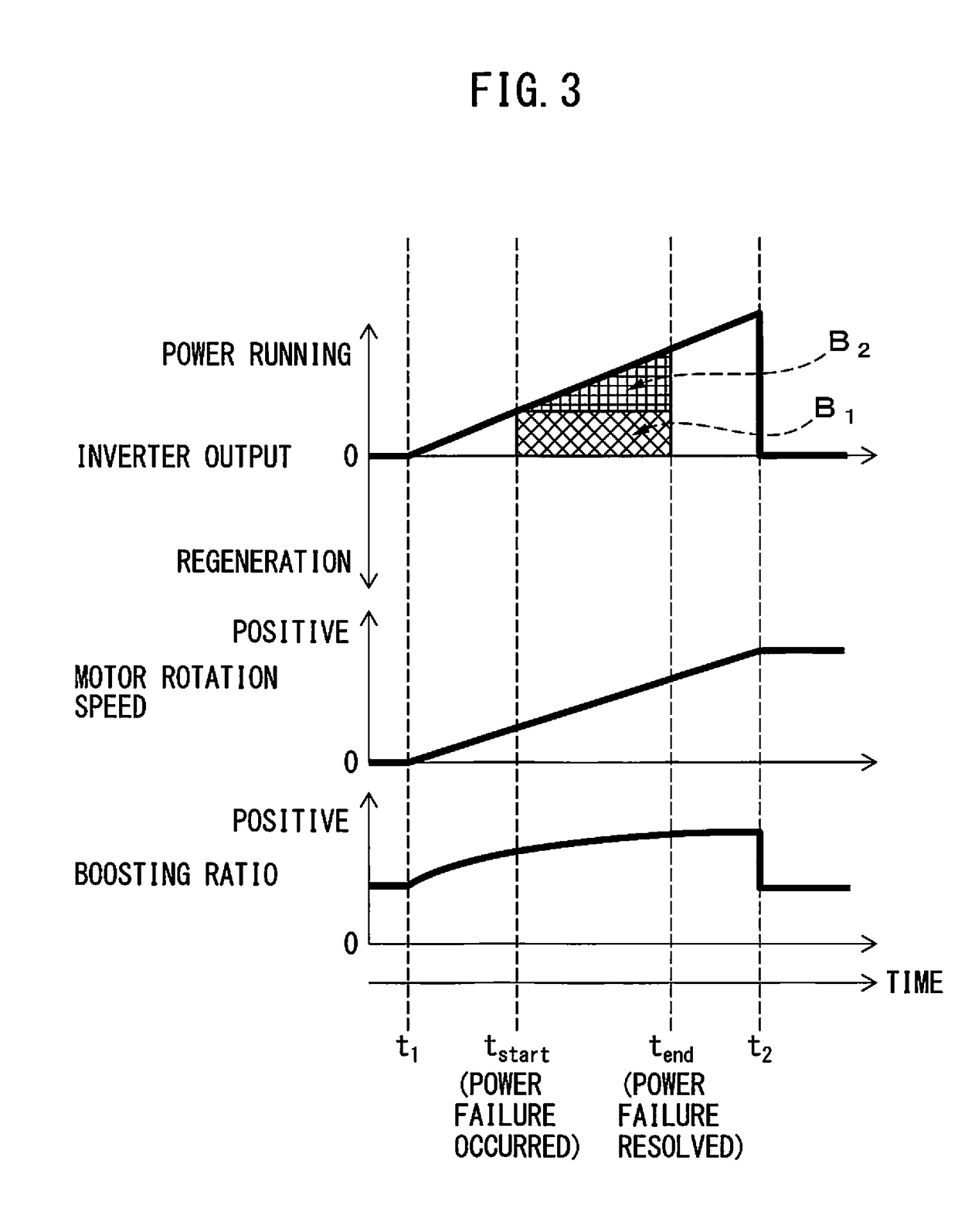Motor drive device including pwm converter controlled in boosting ratio
- Summary
- Abstract
- Description
- Claims
- Application Information
AI Technical Summary
Benefits of technology
Problems solved by technology
Method used
Image
Examples
Embodiment Construction
[0021]A motor drive device including a PWM converter controlled in boosting ratio will be described below with reference to the drawings. However, it should be understood that the present invention is not limited to the drawings or the following embodiments. In the drawings, the same reference numerals denote the same members. These drawings use different scales as appropriate to facilitate an understanding.
[0022]FIG. 1 is a block diagram illustrating a motor drive device according to one embodiment. The case where an AC motor (simply referred to as a “motor” hereinafter) 3 is controlled by a motor drive device 1 connected to an AC power supply 2 will be taken as an example herein. The numbers of phases of the AC power supply 2 and the motor 3 do not particularly limit this embodiment, and a three- or single-phase configuration, for example, may be used. In the embodiment illustrated in FIG. 1, the AC power supply 2 is implemented as a three-phase AC power supply, and the motor 3 is...
PUM
 Login to View More
Login to View More Abstract
Description
Claims
Application Information
 Login to View More
Login to View More - R&D Engineer
- R&D Manager
- IP Professional
- Industry Leading Data Capabilities
- Powerful AI technology
- Patent DNA Extraction
Browse by: Latest US Patents, China's latest patents, Technical Efficacy Thesaurus, Application Domain, Technology Topic, Popular Technical Reports.
© 2024 PatSnap. All rights reserved.Legal|Privacy policy|Modern Slavery Act Transparency Statement|Sitemap|About US| Contact US: help@patsnap.com










